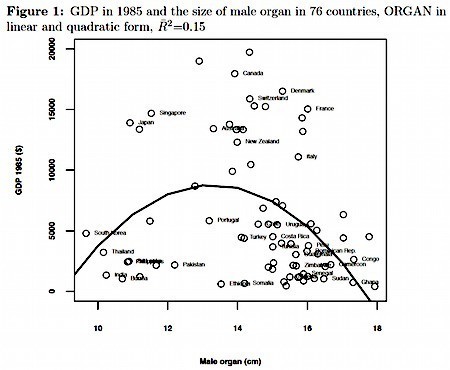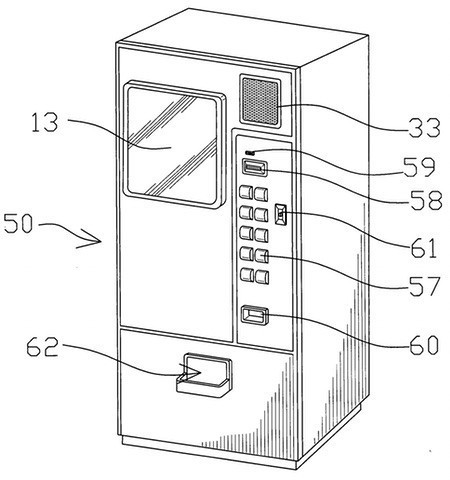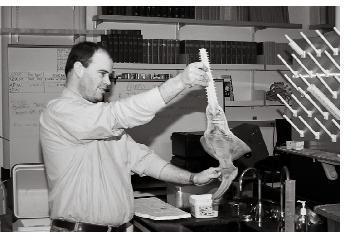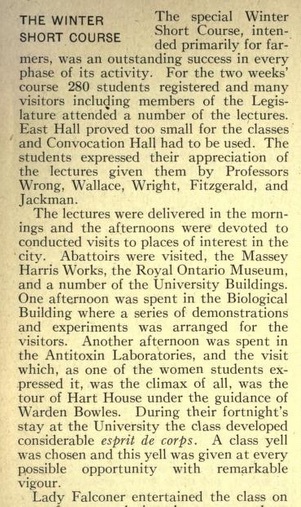Marc Abrahams's Blog, page 351
January 20, 2015
Toppling of the Pops: A sometimes fatal quest for soda pop
We all know that fizzy drinks can affect the health of people who drink them, especially in super-size quantities, but – even worse – fizzy drinks in a vending machine sometimes bring immediate violent death when the machines are attacked.
This is documented dramatically by Dr Michael Q Cosio in a 1988 research study published in the Journal of the American Medical Association. In the summary of his paper, Soda Pop Vending Machine Injuries, Cosio minces no words.
“Fifteen male patients, 15 to 24 years of age, sustained injuries after rocking soda machines. The machines fell on to the victims, resulting in a variety of injuries. Three were killed. The remaining 12 required hospitalisation for their injuries.”
At the time, Cosio was working at the Walter Reed Army Medical Center in Washington, DC. He has since died. I have not determined the manner of his passing.…
—So begins another Improbable Research column in The Guardian.
BONUS: For context, here is detail from a patent for a beverage vending machine. According to Dr. Cosio’s report, this general class of vending machine dispenses cans and — if attacked — death:
January 19, 2015
More Bite than an Old Saw? A Saw Made with Shark Teeth
Francie Diep’s article “Watch a Power Saw Made with Shark Teeth Slice Through Salmon“, in Popular Science magazine, is well headlined, and has a video that shows a power saw, made with shark teeth, slicing through salmon. The research Diep describes was itself described by the researchers at a meeting earlier this month:
“Jawzall: Effects of Shark Tooth Morphology and Repeated Use on Cutting,” CORN, K*; BRASH, J; FARINA, S; SUMMERS, A; Society for Integrative and Comparative Biology, 2015 Meeting, P2-196 Monday, Jan. 5 15:30.
The investigators, at Cornell University; Valley Steel and Stone; Cornell University; and the University of Washington, report:
“Shark teeth both pierce and cut their prey, which is viscoelastic and structurally and materially heterogeneous. We propose a device for testing the function of shark teeth in a biologically relevant context with respect to their movement relative to the prey. We used this device to test whether tooth shape has an effect on cutting efficiency on a large actinopterygian prey item (salmon) and how quickly teeth dull. Teeth from four sharks, tiger (Galeocerdo cuvier), sandbar (Carcharhinus plumbeus), silky (C. falciformis), and sixgill (Hexanchus griseus), were attached to 30.5cm straight saw blades with epoxy. Each blade was mounted in a reciprocating saw and applied to a chum salmon with constant force. Published data report that Carcharodon carcharias shakes its head at 0.5Hz (~15cm/s). Our saw moved the teeth 35 cm/s. Our ‘bite force’ was substantially below that reported for sharks, due to of limitations of our system. There was not a significant effect of tooth shape on the area of prey cut per linear distance traveled. The mean area cut per cm traveled across all tooth shapes was 69 cm^2/cm. There was a significant effect of repeated use on cutting speed. After 12 reciprocations, a tooth cut only 7% of the tissue it cut on the first 6 reciprocations (at 5.7cm/reciprocation). This rapid dulling is enhanced by the high speeds at which we are cutting, as the fish tissues appear much stiffer at high strain rates. Sharks have very rapid tooth replacement and we propose this is driven by the speed of dulling from use.”
(Thanks to investigator Paula Gramm for bringing this to our attention.)
Here is a photo of Adam Summers, the final-named author of the study, engaged in a different activity:
Professor Wright meets Professor Wrong (Toronto, c. 1921)
If you’re looking for a (documented) example of an occasion when Professor Wright encountered Professor Wrong, then your search is over. One such event happened somewhere around March 1921, at the University of Toronto Winter Short Course for farmers. Here’s an account, in Volume XXI of the University of Toronto Monthly, March 1921, No. 6. [Use the slider at the bottom of the screen to visit page 243]
“The special Winter Short Course intended primarily for farmers, was an outstanding success in every phase of its activity. For the two weeks’ course 280 students registered and many visitors including members of the Legislature attended a number of the lectures. East Hall proved too small for the classes and Convocation Hall had to be used. The students expressed their appreciation of the lectures given them by Professors Wrong, Wallace, Wright, Fitzgerald, and Jackman. [our emphasis]
The lectures were delivered in the mornings and the afternoons were devoted to conducted visits to places of interest in the city. Abattoirs were visited, the Massey Harris Works, the Royal Ontario Museum, and a number of the University Buildings. One afternoon was spent in the Biological Building where a series of demonstrations and experiments was arranged for the visitors. Another afternoon was spent in the Antitoxin Laboratories, and the visit which, as one of the women students expressed it, was the climax of all, was the tour of Hart House under the guidance of Warden Bowles. During their fortnight’s stay at the University the class developed considerable esprit de corps. A class yell was chosen and this yell was given at every possible opportunity with remarkable vigour.
Lady Falconer entertained the class on two afternoons during the curse [sic] … [continues]
May we also recommend:
“Keep clean inside” (page 239)
“The Goblin” (page 269)
“What are your brains worth?” (page 35)
Here’s the Wright-Wrong passage, reproduced as it appears in the original publication:
January 18, 2015
Self-made bread (sort of): A delicious video
This video illustrates the life cycle of self-made bread:
It shows an analog to what might (metaphorically or poetically, or in some other vague way) be loosely described as the life cycle of Dyctiostelium discoideum, which is better known to most folks who know it as slime mold.
BONUS: Video of Dyctiostelium discoideum itself:
January 17, 2015
Gene Hunt and the hunt for genes
 Gene Hunt has, so far, resisted the pressures of nominative determinism. Gene Hunt does not hunt for genes.
Gene Hunt has, so far, resisted the pressures of nominative determinism. Gene Hunt does not hunt for genes.
No. Gene Hunt hunts for explanations for evolutionary patterns as expressed in the fossil record. “Empirically,” Gene Hunt says, “I most often work with ostracodes – small, bivalved crustaceans – with much of this work to date on deep-sea forms.”
Gene Hunt, Ph.D., is the curator of Ostracoda in the Department of Paleobiology at the Smithsonian National Museum of Natural History in Washington, DC.
Among Gene Hunt’s many publications, you’ll find the metaphorically as well as non-metaphorically cutting-edge study:
Green, Walton A., Hunt, Gene, Wing, Scott L. and DiMichele, William A. 2011. Does extinction wield an axe or pruning shears? How interactions between phylogeny and ecology affect patterns of extinction,Paleobiology, 37(1):72-91
January 16, 2015
Dramatic improbable readings from bizarre research studies, at Arisia on Saturday
This Saturday, Jan 17th at 12:30pm, Improbable Research will hold a special session at Arisia – “New England’s largest science fiction and fantasy convention“.
Brave volunteers will emote brief excerpts from published academic studies and patent documents. (Some of those studies and patents won Ig Nobel Prizes).
The people reading these studies were nominated (and commented on) by attendees of Arisia and readers of this website. They will each, upon arriving at the event, choose an appealing paper (or patent), and dramatically read two minutes’ worth of it. They will then answer questions from the audience, being scrupulously clear about what they do NOT know, as well as what they do.
Excerpted from our Notes for Readers and Audience at Dramatic Improbable Readings:
DEAR READER
Please arrive a little early
There will be a stack of printed, genuine studies. Choose the one that most appeals to you
Skim through it, and choose one or more passages that your favorite actor would find delightful to real aloud in some extremely colorful way. Keep it short — enough words to last about two (2) minutes
Today, you will be that actor. Treat the words as fantastic theatrical prose — nothing more, nothing less. Perform it in any style you likeDEAR AUDIENCE
The person reading this paper to you probably has no familiarity with what they are reading. They saw it for the first time just a few minutes ago
After the reading, you may ask questionsDEAR READER
If you don’t know the answer, say so. If you want to speculate, make that clear
Answer any way you like, with just one rule: NO BULLSHITTING
NOTE: If you are a member of the LFHCfS and are planning to attend this event, you are entitled to take a bow, allowing the audience to shower you and your hair with applause. Please let a member of our event staff know that you are a member so we can give you this important moment in the sun (or rough substitute for the sun).
Discarded dog-poop bags – a photo essay
It was somewhere around 2007, that Dr. John Darwell, who is a senior lecturer in photography at the University of Cumbria, UK, began researching and photographically documenting the phenomenon of ‘ddsbs‘.
“
Over the past two years I have observed with increasing fascination the growing number of discarded dog shit bags (ddsbs) I encounter whilst out walking in both open countryside, urban parklands and even suburban streets. This has led to a great deal of speculative thought on my part as to why this situation has developed. I can fully understand dog owners simply ignoring their dogs output (unpleasant as it is for anyone who encounters it with all its negative health associations) as it will in a relatively short time biodegrade and essentially disappear. I can also appreciate dog owners who scoop and bag dog mess and place it in a bin for disposal. What I fail to understand is the increasing number of dog owners who bag their dog’s mess and then discard in bushes or hang on fences/tree branches or leave in the middle of pathways and playing fields. Is this purely about not wishing to be fined and thereby picking the right moment to surreptitiously dispose of the offending article? Whatever the reasoning the ddsb has very quickly become a feature of our environment. The images presented here become typologies that reflect on the nature of function and style and confront the viewer with the (often unseen) contents of the bags leading to a mixture of amusement, bemusement, curiosity and revulsion.”
The author’s photographic gallery, with 44 examples of ‘ddsbs’ can be found here.
Note: The ddsbs project, which was originally solely UK based, has now gone international, with photos from Western Australia (mainly yellow), Isle of Man, Norway, Belgium, Norway and Germany (mainly red).
January 15, 2015
Westling’s lightning-rod economic growth thesis
Tatu Westling wrote an economics paper linking two things he has pondered intensely:
“Male Organ and Economic Growth: Does Size Matter?” Tatu Westling, Helsinki Center of Economic Research Discussion Paper No. 335, July 2011. The author, at the University of Helsinki, Finland, explains:
“This study explores the link between economic growth and penile length between 1960 and 1985. It estimates an augmented Solow model utilizing the Mankiw-Romer-Weil 121 country dataset. The size of male organ is found to have an inverse U-shaped relationship with the level of GDP in 1985. Economic development between 1960 and 1985 is negatively associated with the size of male organ. With considerable reservations it is also found to be a more important determinant of GDP growth than country’s political regime type. Two interpretations for the patterns between male organ and economic growth are discussed briefly: the link between penile length, testosterone and risk-taking, and selfesteem production. Despite the robust statistical links, until more rigorous treatments on the subject the proposed ‘male organ hypothesis’ should be taken with reservations.”
In this video, Tatu Westling presents, deadpan, his theory:
Here’s further detail from Westling’s paper:

(Thanks to Evelyn Cornish for bringing this to our attention.)
A little video essay about the Ig Nobel Prizes
Dogs with a wider angle of wag are at risk
This study focuses public attention on the (hitherto largely ignored) concept of wider angle of wag:
“Risk factors for tail injuries in dogs in Great Britain,” G. Diesel, D. Pfeiffer, S. Crispin and D. Brodbelt, Veterinary Record, vol. 166, no. 26, June 26, 2010, pp. 812-7. The authors report:
“Data were obtained from a stratified random sample of veterinary practices throughout Great Britain, and questionnaires were sent to owners of dogs with tail injuries and owners of a randomly selected sample of dogs without tail injuries…. Two hundred and eighty-one tail injuries were recorded from a population of 138,212 dogs attending 52 participating practices….. Dogs with a wide angle of wag and dogs kept in kennels were at significantly higher risk of sustaining a tail injury. Dogs with docked tails were significantly less likely to sustain a tail injury.”
Marc Abrahams's Blog
- Marc Abrahams's profile
- 14 followers








